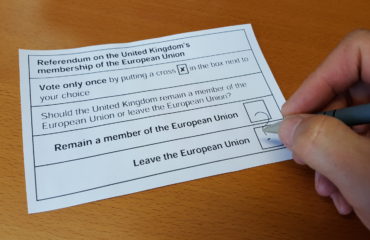
A new Quintax Team Role report has been developed based on our own SR&A model of team roles. It offers both comprehensive definition of the roles and clear development information and support. This article explores some of the history of the development of team role models and introduces the SR&A Team Role model. Finally, the article explores relationships between the SR&A Team Role model and other popular models in current use.
Development of Team Role Models
There are many ways to determine the contribution that an individual will make to a team and to specify the composition of effective teams. One popular approach has been to identify a typology of team roles that characterise significant ways in which people can contribute to both the team task and management of the team process.
An early model was proposed by Kenneth Benne and Paul Sheats in the late 1940s. Over the years a number of typologies have been proposed. Their model identified two major groups of roles that contribute effective team working:
- group task roles such as ‘information-seeker’ or ‘co-ordinator ‘of which there were 12 in total, and
- group team building and maintenance roles such as ‘harmonizer’ and ‘follower’ of which they identified 7 in total.
Many subsequent variations of this model have been proposed of which the Belbin team role model and the Margerison-McCann Team Management System are two of the most influential although with origins that are quite distinct.
Belbin Team Roles
The Belbin® model was developed over a period of 9 years by Meredith Belbin, Roger Mottram and others working at Henley Management College in the 1970s. Their methodology combined observation of team behaviour in tackling an executive management exercise with psychometric assessment of ability and personality. The resultant model has been subject to some relabeling and extension over the years and now consists of 9 team roles.
Assessment of an individual’s team role is typically conducted through the Team Role Self-Perception Inventory (TRSPI) combined with colleague’s scores from Observer Assessment Sheets (OAS). Over the years the psychometric properties of both of these measures have been the subject of some debate, both in terms of the reliability and the construct validity of the roles themselves. However, Belbin has always argued that the assessment of team role should be carried out through a considered combination of self-report and observer information.
This academic debate has been reviewed by Aitor Aritzeta, Stephen Swailes and Barbara Senior in the Journal of Management (2007). One conclusion that can be drawn from their review is that team role preferences can be as readily assessed by personality assessment as by a specific questionnaire. Given the mixed evidence for the reliability and validity of both the TRSPI and the OAS, we feel that there is a strong case for basing team role assessments on a demonstrably reliable and valid personality measure such as Quintax.
Margerison McCann TMS Roles
The Margerison-McCann Team Management Profile Questionnaire (TMPQ) is based on the assessment of personal styles in the context of a variant of the Jungian personality model. The combination of the 16 Jungian types in 8 pairs produces 8 team roles. Reviews of the measure indicate ‘reasonable’ evidence of both reliability and validity. As with the Belbin measure, the self-report questionnaire can be complemented by assessments from colleagues. One of the disadvantages of the TMPQ is that it is based on a rather outdated model of personality, which although brilliant for its time has been superseded by modern models based on the Big Five.
Finding a consensus on team roles
Interestingly, all team role models are criticised by Aritzeta and colleagues for the relatively limited evidence of construct validity. In practical terms this means that the distinctions between the team roles proposed in both models are less than clear cut with overlaps among similar roles. For example, Co-ordinator and Resource Investigator tend to be positively correlated, so that individuals who have a preference for one of these roles are likely also to have a preference for the other. In contrast, Shaper and Team Worker are strongly negatively correlated, which means that a preference for one of these roles is likely to indicate avoidance of the other.
That said, there is a wealth of practical experience of consultants who have used existing team role models successfully as a way of developing the understanding and performance of teams in working together. There is little doubt that team role typologies are effective for these purposes.
The SR&A Approach
Our approach has been to build on the strong face validity of the Team Role concept by linking our definitions closely to rigorously determined personality styles so as to provide a consistent measurement of individual preferences and styles in team behaviour on the basis of Quintax profiles.
SR&A Team Roles
| SR&A Team Role | Typical Contribution or Team Function |
|---|---|
| Organiser | Clarifies goals and group process, summarises progress, identifies departures from agreed direction, raises questions on direction the team is taking, monitors progress against objectives, maintains the groups focus but may not contribute to identifying solutions |
| Driver | Shows drive, determination and urgency in setting and achieving group goals, won’t hold back criticism, can be impatient with less driven team members, can be controlling and reluctant to give ground |
| Thinker | Proposes new and different ways of doing things, likes working with complexity and ambiguity, draws on theory, can overcomplicate things for others, may work at too abstract a level to facilitate practical problem solving |
| Evaluator | Tests ideas and proposals, looks for the implications of things, not easily fooled, takes time to consider all of the options and their possible consequences, tests ideas and proposals against requirements and standards, can appear to be overly cautious, critical and negative to others |
| Networker | Seeks out and brings information to the group through contacts and other resources, represents the team to others demonstrating enthusiasm for team activities and achievements, a persuasive negotiator, can lose enthusiasm in the longer term |
| Harmoniser | Identifies and addresses friction or conflict in the group, seeks group harmony, brings in sidelined team members, endeavours to achieve compromise, evaluates group proposals in terms of values and the impact on others, can be prone to seeing what others consider healthy debate as destructive and try to stifle it |
| Deliverer | Focuses on the practical implications of proposals and ideas, relates suggestions to current systems and processes, questions radical innovations on the grounds of practicality, seeks improvement through adaptation of current approaches |
| Finisher | Focuses on achieving the task within the time available, attends to and checks details, anxious to complete and get things done, seeks closure rather than debate and may therefore push for a decision or agreement too quickly |
| Expert | Single-minded and dedicated in own area of expertise, not particularly people-minded, can be dismissive of other specialisms, seeks perfect solutions, strongly identifies with own professional role |
These different roles or functions can be grouped in line with a simple model of Doing, Thinking and Relating as follows:
| Domain | Functions and SR&A Team Roles |
|---|---|
| DOING | Task/goal-oriented: driver, deliver, finisher Focus on achieving goals. |
| THINKING | Problem solvers: evaluator, thinker, expert Focus in intellectual, professional contribution. |
| RELATING | People- oriented: organiser, networker, harmoniser Focus on people and relationship matters |
For users of the Team Role Concept, the analogies between roles from different theoretical standpoints will be very clear. In the Quintax Team Role Report we have included detailed descriptions of the respondent’s scores on the above roles, and their implications in terms of behaviour. Also included is a breakdown of how the SR&A Team Role model maps on to those of other team role theorists. This indicates the analogy between our roles and those of other psychologists and should be of benefit to those with experience of other systems who are intending to use Quintax in a team development setting.
Further Reading
K.D. Benne & P. Sheats. Functional roles of group members. Journal of Social Issues, 1948, vol 2, pp. 42–47.
A. Aritzeta, S.Swailes, & B.Senior. Belbin’s Team Role Model: Development, Validity and Applications for Team Building. Journal of Management, 2007, vol 44, pp 96-118.




You must be logged in to post a comment.